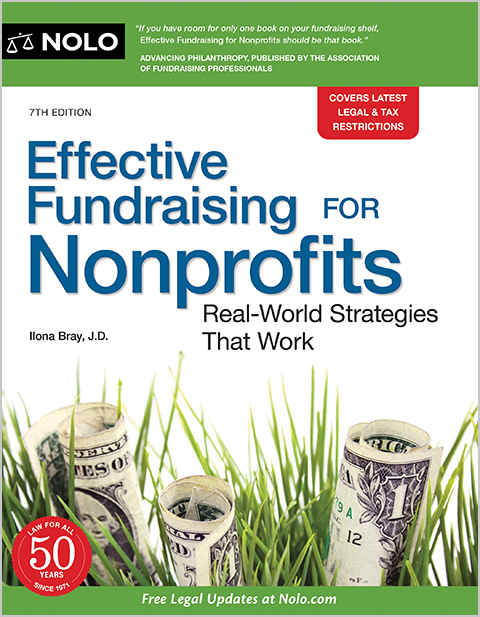Nonprofit Marketing: Techniques to Boost Recognition and Drive Contributions
Nonprofit Marketing: Techniques to Boost Recognition and Drive Contributions
Blog Article
The Function of Community Involvement in Nonprofit Fundraising: Structure Lasting Relationships for Sustainable Support
Neighborhood interaction is significantly identified as an important part of effective not-for-profit fundraising. By cultivating real partnerships with neighborhood stakeholders, organizations can grow trust fund and loyalty, which are vital for lasting assistance. Nevertheless, the approaches and strategies employed to involve areas differ commonly, elevating vital inquiries concerning efficiency and effect. What are the most effective methods for cultivating these necessary links, and exactly how can nonprofits determine their success in this field? Understanding these dynamics can substantially influence the future of fundraising efforts and the total objective of nonprofit organizations.
Understanding Area Engagement
Community engagement is a crucial part of effective nonprofit fundraising initiatives. It refers to the techniques and tasks that organizations utilize to get in touch with their regional neighborhoods, fostering partnerships that are mutually valuable. Comprehending area engagement includes identifying its multifaceted nature, which consists of outreach, participation, and partnership. Nonprofits must determine crucial stakeholders-- such as area participants, neighborhood companies, and other organizations-- to produce reliable involvement methods.
Effective community interaction is predicated on active listening and responsiveness to the needs and passions of the area. This procedure includes getting feedback, recognizing neighborhood dynamics, and making sure that the organization's objective aligns with local top priorities. Involving the community can take various kinds, consisting of public conferences, volunteer opportunities, and partnership campaigns, each created to encourage participation and investment in the organization's objectives.
Moreover, community involvement must be approached as a recurring dialogue as opposed to an one-time initiative. By promoting an inclusive setting where neighborhood voices are listened to and valued, nonprofits can develop a strong structure for future fundraising endeavors. Eventually, a deep understanding of community involvement empowers companies to create genuine links that improve their total efficiency and sustainability.
Benefits of Solid Relationships
Strong partnerships formed with neighborhood interaction yield countless benefits for not-for-profit fundraising initiatives. Firstly, these partnerships foster count on and trustworthiness, important parts in encouraging contributors to add. When potential supporters see a not-for-profit proactively associated with their community, they are more probable to rely on its mission and effect.

Moreover, these connections promote efficient interaction. Nonprofits can leverage their connections to share tales of impact, updates, and requires, making sure that advocates remain informed and engaged. This open line of communication not only strengthens bonds yet likewise motivates word-of-mouth promo, broadening the not-for-profit's reach.
Last but not least, strong neighborhood connections can bring in new partners and sponsors. Organizations and people are a lot more likely to straighten with organizations that demonstrate meaningful community involvement, offering added sources and support that can dramatically boost fundraising capabilities. Thus, cultivating robust relationships through community interaction is important to a not-for-profit's lasting fundraising success.
Techniques for Efficient Interaction
How can nonprofits properly engage their communities to improve fundraising efforts? Establishing targeted approaches is essential for promoting significant links. Initially, leveraging social media sites systems enables companies to share their objective dynamically and interactively, reaching a broader audience. Normal updates, engaging material, and calls-to-action can galvanize neighborhood interest and involvement.
2nd, organizing community events, such web as workshops, volunteer possibilities, or fundraising drives, helps with in person interaction, permitting nonprofits to showcase their influence and initiatives. These events not only increase funds however additionally grow relationships and enable neighborhood participants to involve straight with the reason.
Third, carrying out tailored communication techniques can boost engagement. Tailoring messages to certain benefactor sectors based upon interests and past contributions promotes a sense of belonging and financial investment in the company's mission.
Lastly, developing collaborations with local companies and neighborhood leaders can enhance outreach initiatives. Collective efforts can improve exposure and credibility, showing a cumulative dedication to the area's wellness. By integrating these techniques, nonprofits can build long lasting relationships that enhance fundraising initiatives and drive lasting assistance.
Determining Engagement Success
While involving the area is vital for successful nonprofit fundraising, gauging the performance of these interaction efforts is equally vital. Establishing clear metrics permits organizations to assess how well they are getting in touch with their target market and accomplishing their fundraising goals. Trick performance indicators (KPIs) such as benefactor retention rates, volunteer participation levels, and engagement on social media systems provide substantial data for evaluation.

Routinely analyzing these metrics makes it possible for companies to pivot their techniques when necessary, ensuring that area interaction remains aligned with their total objective. Additionally, sharing these results with stakeholders cultivates transparency and constructs depend on, encouraging more community participation. Eventually, a durable measurement structure not only informs future fundraising campaigns however also reinforces the relationship in between the nonprofit and its advocates, preparing for lasting success.
Case Researches in Neighborhood Influence
Various study illustrate the profound influence that community interaction can have on nonprofit fundraising success. One notable example is the "Food for Idea" initiative, where a regional food bank partnered with colleges and companies to host community dinners. These occasions not only increased funds however likewise cultivated a sense of belonging among participants, dramatically increasing contributor retention prices.
An additional compelling case is the "Eco-friendly Spaces Job," which entailed neighborhood homeowners in the revitalization of urban parks. This initiative not only garnered financial backing from regional services yet additionally grew a volunteer base that added to recurring upkeep and shows. The feeling of possession and satisfaction among neighborhood members equated into sustained contributions.
In the world of arts, the "Art for All" project efficiently involved neighborhood artists and clients to develop joint art installments, bring about raised additional info presence and contributions news for a neighborhood arts not-for-profit.
These examples highlight that when nonprofits prioritize area participation, they can produce long lasting relationships that boost fundraising initiatives, making sure sustainable support and cultivating a vivid area society. Such cases demonstrate that community interaction is not merely an approach yet a necessary column of not-for-profit success.
Conclusion
In final thought, area engagement is integral to the success of not-for-profit fundraising efforts. By cultivating strong relationships with neighborhood stakeholders, organizations boost depend on and trustworthiness, causing improved benefactor retention and loyalty. Applying efficient involvement methods and measuring their effect ensures that nonprofits can prosper and adapt. Eventually, a durable foundation of neighborhood assistance not only magnifies fundraising potential however additionally cultivates a society of cooperation, necessary for achieving long-term business objectives and sustaining meaningful effect.
Nonprofits need to determine crucial stakeholders-- such as area participants, neighborhood organizations, and various other companies-- to develop reliable involvement approaches.

In verdict, community engagement is important to the success of not-for-profit fundraising initiatives.
Report this page